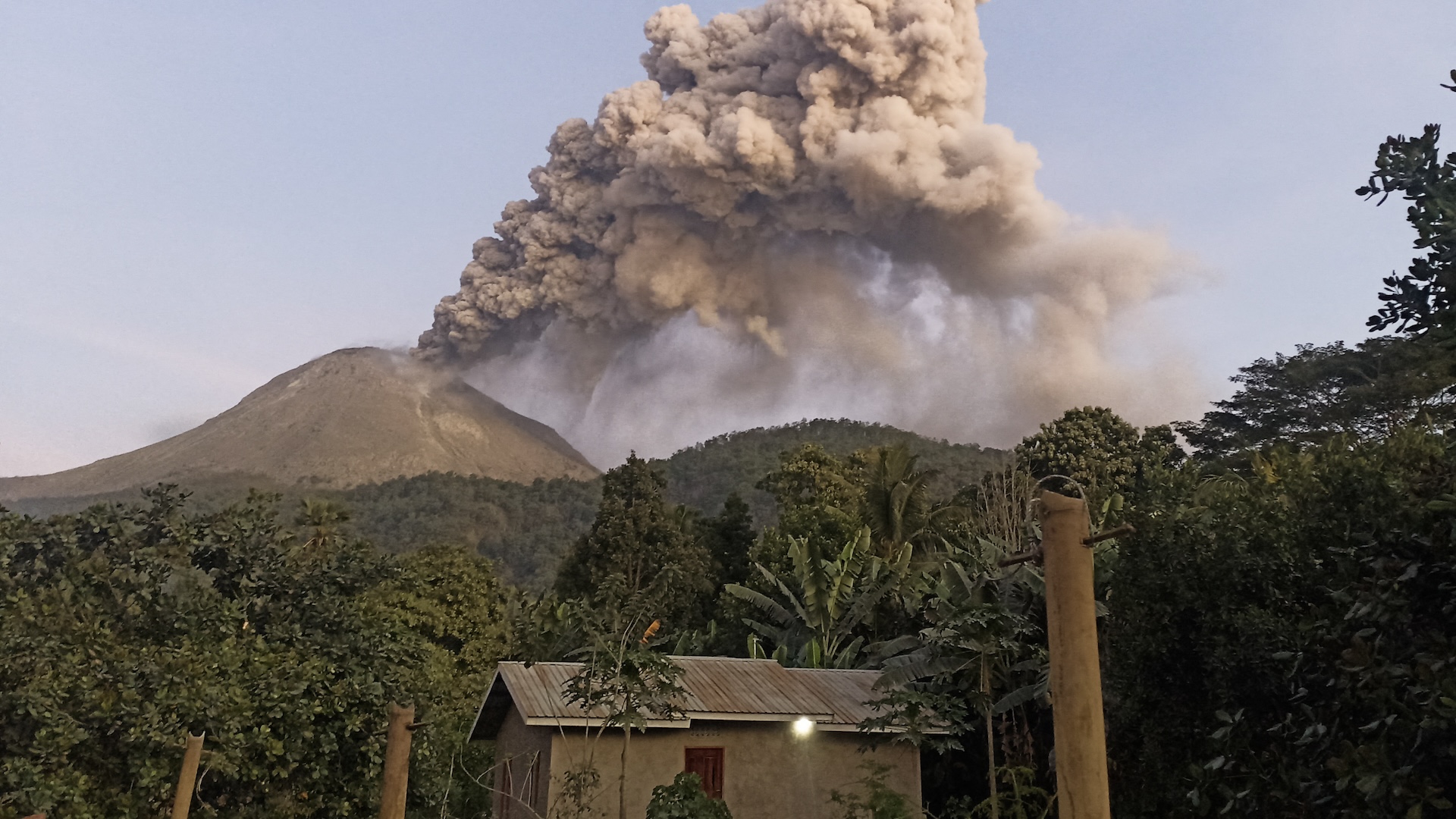
An eruption from Indonesia's Lewotobi Laki-laki stratovolcano has killed at least 10 on the island of Flores after volcanic debris and hot ash collapsed and burned homes.
According to the Associated Press, the dead were all found within a 2.5-mile (4 kilometers) radius of the volcano crater. The eruption occurred around midnight local time and spewed a column of ash and smoke 6,500 feet (2,000 meters) into the air. More than 10,000 people have been affected, according to the country's National Disaster Management Agency (NDMA). Search-and-rescue missions are still ongoing.
Lewotobi Laki-laki is one of two stratovolcanoes perched next to each other on Flores, an island in eastern Indonesia that is home to about 1.8 million people. It sits next to a twin volcanic summit, Lewotobi Perempuan. "Laki-laki" means "man" in Indonesian, while "perempuan" is a word for "woman" with somewhat derogatory connotations. The craters of the two volcanoes are less than 1.2 miles (2 km) apart, according to the Smithsonian Institution's Global Volcanism Program.
Lewotobi Laki-laki grew restive in December 2023, after a period of relative quiet since 2015. In January and February 2024, the volcano regularly spewed columns of ash and sometimes flows of lava and pyroclastic material—a mix of volcanic gases and hot ash that flows like an avalanche down the steep slopes of a volcano. Throughout March and April, the volcano calmed, but continued to release regular plumes of steam, gas and sometimes ash. June saw increased activity that forced the local airport to cancel flights, and officials raised the volcanic activity alert level to a 3 on a scale of 4. That alert level remained elevated until the renewal of eruptive activity on Nov. 3, when the NDMA raised the warning level to 4, the highest on the scale.
Indonesia is the most volcanically active nation on Earth, according to the U.S. Geological Survey (USGS), and has the most population of any nation subject to risk from volcanoes. Indonesia sits on the Sunda tectonic plate, which is in a slow-motion collision with the neighboring Australian Plate. Just offshore the island of Java, according to the USGS, the Australia Plate slides under the Sunda plate, a process called subduction. This both triggers frequent large earthquakes and partially melts the crust, feeding the volcanoes that build Indonesia's rugged topography.







